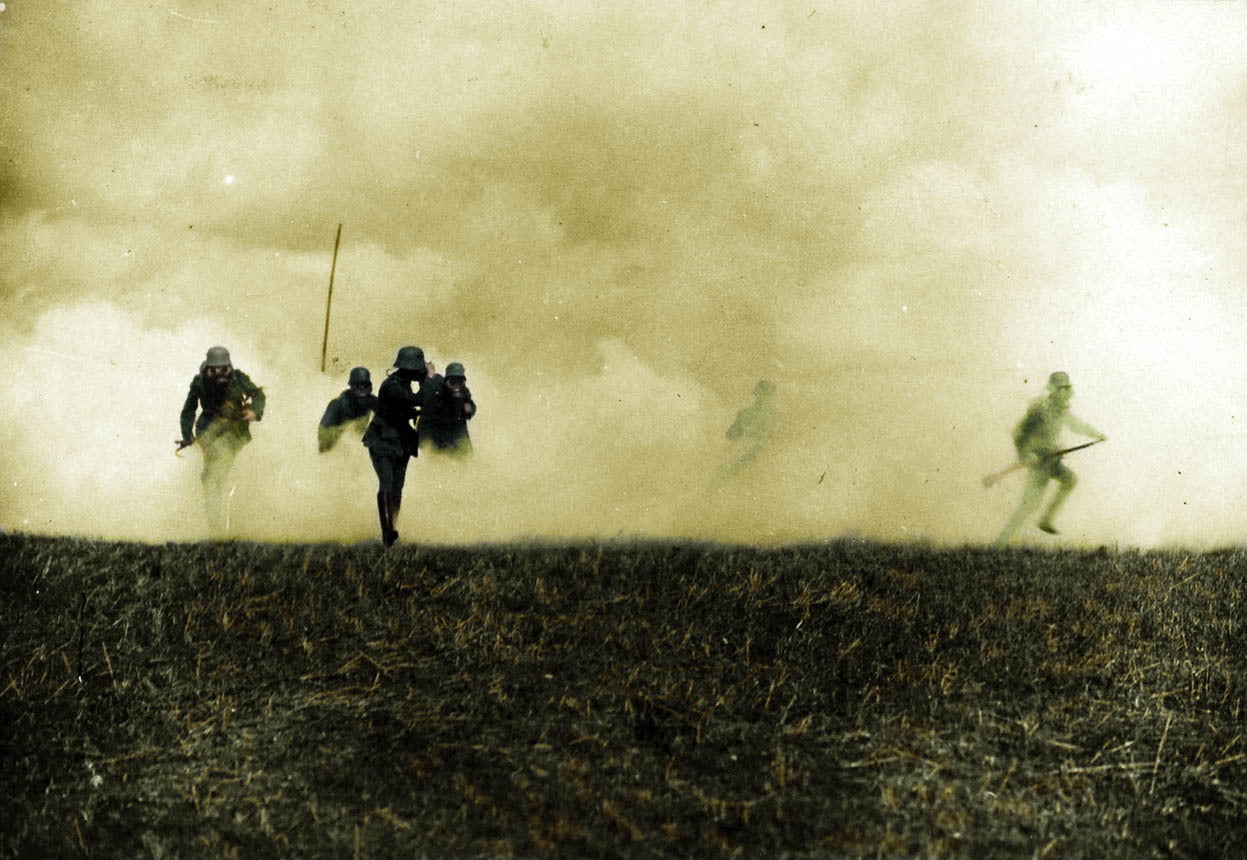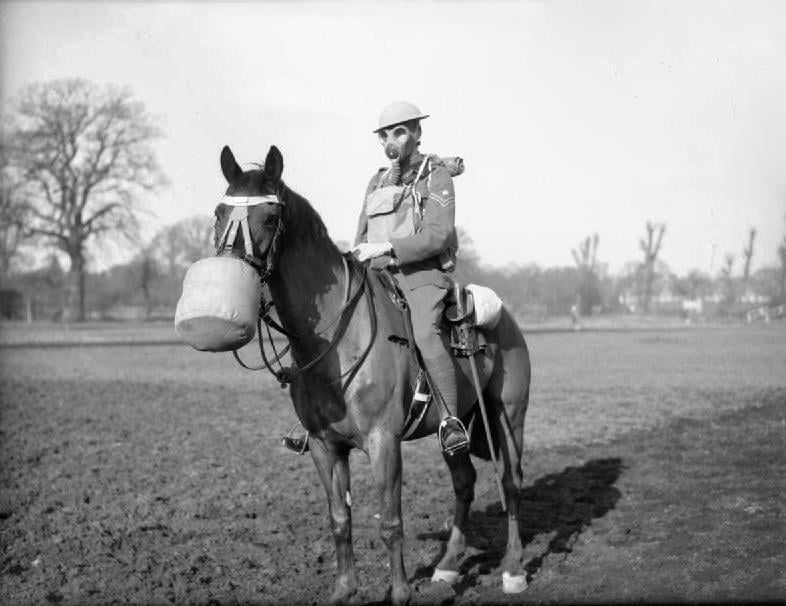
Gas! GAS! Quick, boys!—An ecstasy of fumbling
Fitting the clumsy helmets just in time,
But someone still was yelling out and stumbling
And flound’ring like a man in fire or lime.—
Dim through the misty panes and thick green light,
As under a green sea, I saw him drowning.
The green sea Wilfred Owen describes in his poem “Dulce et Decomrum Est” is a sea of chlorine gas. Chlorine was widely used during the first world war as a weapon of mass destruction. It is very much heavier than air and so will remain at ground level moving around like a “green sea”. This property along with its highly toxic properties make it an ideal gas for warfare. Industrially its best known use is in water purification for domestic supplies and in swimming pools, but the bulk of it is used to make chlorinated compounds such as PVC and for bleaching paper and fabrics. In places where chlorine is stored and used it is common for stringent precautions to be taken and respiratory protection to be used when working around it, however, it is possible to liberate chlorine from other apparently innocuous materials.
In June 2019, Wiltshire company were fined £40,000 and ordered to pay costs of £22,000 when they mistakenly mixed an Intermediate Bulk Container (IBC) containing approximately 700 kg of concentrated sulphuric acid into a mixing vessel which already contained 1,600 litres of sodium hypochlorite solution.
The chemicals reacted releasing a large cloud of toxic chlorine gas. There was no clear evacuation plan for workers caught on-site, with several taken to hospital with breathing difficulties.
A Health and Safety Executive (HSE) investigation found the incident happened because a dedicated mixing plant had not been brought back into service after maintenance work, and the company had failed to introduce effective records management for the temporary manual system.
The IDLH (immediately dangerous to life and health - exposure to airborne contaminants that is "likely to cause death or immediate or delayed permanent adverse health effects or prevent escape from such an environment) concentration is 10ppm. Breathing lower concentrations can aggravate the respiratory system and exposure to the gas can irritate the eyes. The short term exposure limit for chlorine at 0.5ppm, and repeated exposure at levels much lower than this can lead to long term respiratory problems.
The toxicity of chlorine comes from its oxidizing power. When chlorine is inhaled at concentrations greater than 30ppm, it reacts with water and cellular fluid, producing hydrochloric acid (HCl) and hypochlorous acid (HClO), both highly corrosive About 1000ppm can be fatal after a few deep breaths of the gas.
Chlorine is such a very dangerous gas that during World War 1 even the horses needed gas masks.

